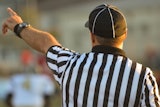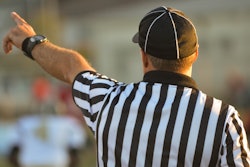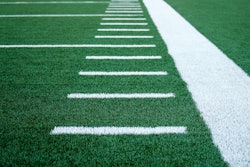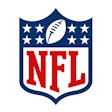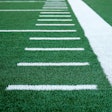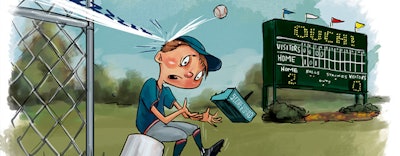
Courts have frequently sided with the owners and operators of baseball facilities and teams who face lawsuits when errant bats and batted balls injure fans. But what's the potential liability exposure when a player is injured by a batted ball after being assigned a facility operations task during the game? That was the question before a Wisconsin Court of Appeals last December in Radebaugh v. Wausau Underwriters Insurance Company P/K/A Liberty Mutual Insurance Company et.al, No. 2016AP2357, (W.I. Ct. App Dist. IV, Dec 7, 2017).
Scorekeeping scare
On June 14, 2011, 14-year-old Dane Radebaugh participated in a teen baseball game sponsored by the Lake Mills School District and played at Campus Field at a district middle school. The game was coached by defendant Terry Yandre and officiated by two umpires, Travis Myers and Roger Burrow. The coach and the umpires each had many years of experience at Campus Field, and league coaches had been told by the Lake Mills Recreation Department (part of the school district) to keep children in the dugout when not playing. Campus Field has two recessed concrete dugouts, each with a six-foot-high chain link fence positioned three feet from the front.
During the game and at Yandre's request, Radebaugh, a catcher who had been removed from the game over heat concerns, was operating the scoreboard while seated on an overturned bucket on the home plate end of the dugout. Though he was seated between the chain link fence and the front of the dugout, there was no fence between Radebaugh and home plate approximately 49 feet away.
While operating the scoreboard's remote control, Radebaugh was struck by a line drive foul ball two inches above his ear, fracturing his skull, causing internal bleeding and resulting in Radebaugh losing an eighth of his brain tissue. He was not wearing a helmet.
Radebaugh sued the school district, along with Yandre, Myers and Burrow individually, alleging that both the district and the coach and umpires were negligent in allowing Radebaugh to sit outside the dugout, in close proximity to the plate and without a helmet, thus creating an unreasonably dangerous circumstance.
Compelling danger?
The district and the coach and umpires both sought summary judgment, asserting immunity under Wisconsin state statutes. Specifically, the district claimed it was entitled to governmental immunity under WIS. STAT § 893.80(4), which states, "No suit may be brought against any ... governmental subdivision or agency thereof ... for acts done in exercise of legislative, quasi-legislative, judicial or quasi-judicial functions."
Radebaugh, however, claimed that the "compelling dangers exception" should apply in this case, thus negating the application of immunity. Earlier case law in Wisconsin clarifies that the "compelling dangers exception" arises when "there exists a known present danger of such force that the time, mode and occasion for performance are evident with such certainty that nothing remains for the exercise of judgment and discretion (Lodl, 253 Wis.2d 323)." The "compelling danger exception" is reserved for situations that are more than unsafe, where the danger is so severe and so immediate that a response is absolutely necessary (Umansky, 319 Wis. 2d 622).
Radebaugh argued that the school district knew there was a risk the scoreboard operator could be hit by a line drive and that the risk was heightened by Radebaugh being seated without a helmet only 49 feet from home plate. Further, Radebaugh argued that the heightened risk of concussions and other injuries from line drives is well known, and that the combined risks presented a known and compelling danger for which the district was obligated to take immediate protective action. Lastly, Radebaugh argued that inferring a low probability of danger simply because no other scoreboard operators had been hit is unreasonable.
Countering these arguments, the district claimed that while there was a risk Radebaugh would be hit with a foul ball, the risk did not rise to the level of compelling danger that is so severe and so immediate that a corrective response is demanded.
Siding with the district, the court held that the parties had observed or participated in games at Campus Field for many years, and none had seen a ball enter the area where the scoreboard operator sat or witnessed a ball hit any previous scoreboard operators.
The court found no evidence that anyone aware of the circumstances considered them to be a near certain hazard creating a compelling danger. Further, the court found no evidence that the district knew or should have known about a high-level risk of injury from scorekeeping in the designated area.
The court agreed that the facts relied upon by Radebaugh were certainly relevant to establish negligence on behalf of the district, but that the facts do not establish a known, nearly certain danger compellingly in need of an immediate fix. Absent said compelling danger, the district was entitled to immunity.
Conscious regard of risk
The coach and umpires also argued for individual immunity on the basis of contact sports immunity under WIS. STAT. § 895.525(4m).
This statute states, "A participant in a recreational activity that includes physical contact between persons in a sport involving amateur teams, including teams in recreational, municipal, high school and college leagues, may be liable for an injury inflicted on another participant during and as part of that sport in a tort action only if the participant who caused the injury acted recklessly or with intent to cause injury." The statute imposes the recklessness standard — unless a plaintiff can prove that a defendant acted recklessly or with intent to cause injury, the defendant cannot be held liable.
To demonstrate that the coach and umpires acted recklessly and should not qualify for immunity, Radebaugh argued that there are rules requiring helmets for certain players in certain areas of the field, but a helmet was not required for the scoreboard operator. Further, he argued that the coaches and umpires have a duty to recognize dangerous conditions and eliminate or minimize the danger, and that not doing so is reckless. Additionally, Radebaugh argued that allowing the scoreboard operator to sit 49 feet from the plate unprotected, given the increased public awareness regarding the dangers presented by errant line drives, constitutes reckless behavior.
In response, the coach and umpires argued that the scoreboard operator positioning in question had been practiced for years, and none of them had ever considered that it created a high risk of physical harm to the scorekeeper. The coach and umpires argued that they could not consciously disregard the risk of harm to the scorekeeper (required for recklessness) because they never realized the risk of harm was present, given how common it was for the scorekeeper to sit in the position in question.
Siding with the coach and umpires, the court did not believe there were strong enough arguments to support that the individual defendants acted recklessly or in a conscious disregard of a high risk of harm.
What not to do
While the multiple defendants in this case successfully avoided liability under Wisconsin law, the facts of the case demonstrate a dangerous condition present at Campus Field that neither the Lake Mills School District nor the coach and umpire defendants chose to remedy. While the court may not have found the positioning of the scoreboard operator dangerous enough to warrant an immediate action, the choices made by the district and the coach and umpires are not representative of best practices regarding safety standards in baseball.
Further, while the court granted contact sport immunity to the coach and umpires, relying on the reasoning that a person can't consciously disregard a risk he or she doesn't know is present, the failure to recognize a risk should not absolve a coach from responsibility and potential liability for an injury. A case that took six years to litigate could have been avoided had either the district or the individual defendants practiced common sense or upheld their duty of care to Radebaugh.
In its decision, the court made the inference that but for the immunity statutes, the multiple defendants were likely to be found negligent. Identifying risks present for participants is the legal responsibility of both the district and the coach and umpires, and parties that should know better breached that responsibility. Given all that is known about the high risk of serious injury related to line drives in baseball, more care should have been given to the scoreboard operator. While ultimately the multiple defendants avoided legal liability, this case serves as an example of what baseball team or stadium owners and operators should not do.
Regardless of the sport, facility owners and operators have a responsibility to detect unsafe conditions if they want to avoid liability lawsuits. It is neither reasonable, nor good risk-management practice, to assume that no one will ever get hurt simply because no one ever has.
This article originally appeared in the April 2018 issue of Athletic Business with the title "How foreseeable was scoreboard operator’s injury risk?." Athletic Business is a free magazine for professionals in the athletic, fitness and recreation industry. Click here to subscribe.













